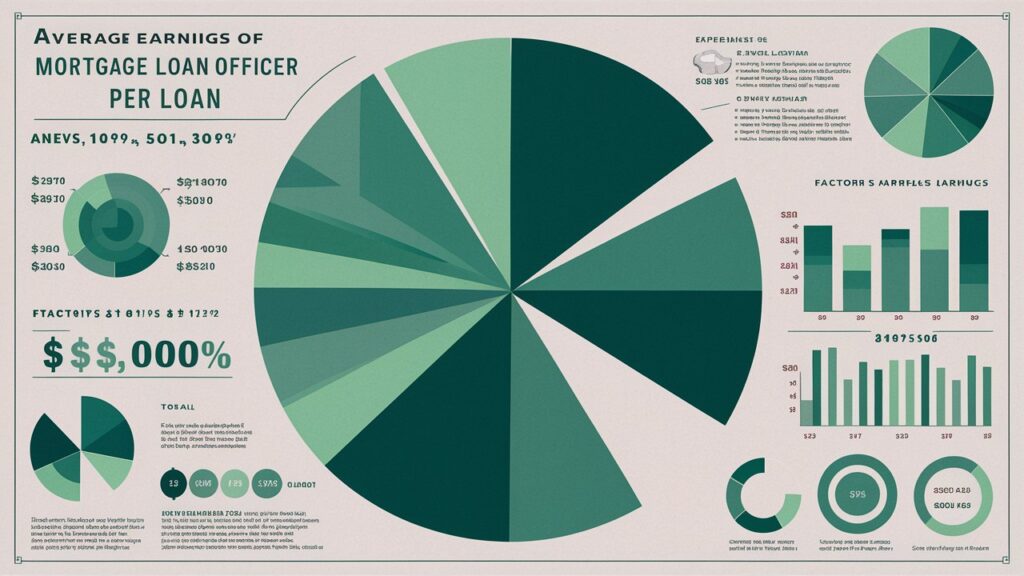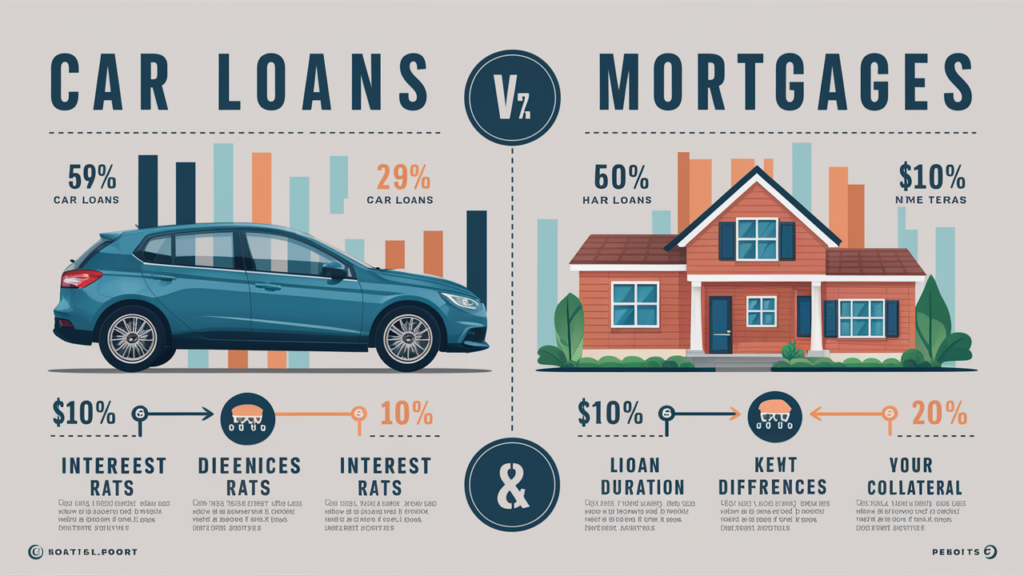There are two main student loan types: federal and private. Federal loans offer perks like lower interest rates and income-based repayment, but private loans might have lower rates for those with good credit.
What Is A Land Loan?
A land loan, like a mortgage for empty lots, finances buying undeveloped land. Unlike a traditional mortgage, it’s for the land itself, not a building on it. You can use it for future homebuilding or business ventures. Land loans are trickier to qualify for than mortgages due to higher risk for lenders, but they offer the chance to design your dream home or invest in raw land.
Types Of Land Loans
The journey through the terrain of land acquisition introduces potential owners to a spectrum of financial pathways, each tailored to the specific nature of the land in question. These pathways, or land loans, offer unique opportunities and challenges reflective of the land’s current state.
Raw Land Loan
The most untamed option, raw land loans, cater to parcels untouched by development. This loan is a beacon for those who see potential in pure, undeveloped earth. Lenders typically view these as ventures into unknown territory, warranting higher interest rates and substantial down payments.
Unimproved Land Loan
A middle ground in land finance, unimproved land loans apply to properties that lack essential utilities but may have minimal access to infrastructure. These lands require a visionary’s eye, and while still considered a risk by lenders, they attract slightly more favorable terms than their raw counterparts.
Improved Land Loan
For land on the brink of development, improved land loans are the gateway. These parcels come equipped with necessary utilities and access, representing the lowest risk to lenders. As such, borrowers can expect the most accommodating interest rates and down payments, making this the preferred route for many looking to build or develop land.
Each loan type offers a distinct path toward land ownership, reflecting the varied aspirations of potential buyers.
How Do Land Loans Work?
Land loans carve out a niche in the finance world, tailored for purchasing parcels of land. They diverge from traditional loans in their approach, focusing on the land’s current and potential value and the borrower’s vision for its use. Understanding their structure is critical for prospective buyers to navigate this specialized terrain successfully.
The Foundation of Land Loans
- Tailoring the Financial Blueprint: Land loans are distinct in considering the land’s state and the borrower’s intended use. These factors are critical in shaping the loan’s terms, including the interest rate, down payment, and repayment period. Lenders meticulously evaluate these aspects to gauge the loan’s risk level, with undeveloped or raw land typically presenting the highest risk.
Plotting the Course
- Selecting the Right Loan Type: The appropriate land loan type—raw, unimproved, or improved—depends on the land’s development status. Raw land loans financing undeveloped land usually carry the strictest requirements due to their perceived risk. Unimproved land loans offer a middle ground suited for land that lacks major utilities but may have some primary access. Improved land loans, the most accessible of the three, apply to land with essential services in place, presenting the lowest risk to lenders.
Land loans demand a higher level of scrutiny from both lenders and borrowers. By understanding the different types of land loans and their specific requirements, prospective landowners can more effectively align their financial strategies with their land ownership goals, paving the way for a smoother acquisition process.
Pros and Cons of Land Loans
Advantages of Land Loans
Opening New HorizonsLand loans offer the flexibility to purchase various land types, catering to diverse needs and dreams. They provide an opportunity to secure property that might later increase in value, offering significant investment potential. Furthermore, these loans can be tailored to suit the specific nature of the land and the buyer’s intentions, ranging from personal use to commercial development.
Challenges of Land Loans
- Navigating Through Rough Terrain: On the flip side, land loans often come with higher interest rates and down payments than traditional mortgages. This reflects the lender’s risk assessment of financing raw or undeveloped land that lacks collateral value. Additionally, the approval process can be more stringent, requiring detailed land use and development plans, further complicating prospective landowners’ journey.
Understanding the pros and cons of land loans is crucial for anyone considering this path to land ownership. While offering a gateway to realizing property dreams, these loans demand careful navigation and foresight.
How To Get a Loan for Land
Securing a loan for land involves a strategic approach, blending research, preparation, and proper financial planning. This journey to land ownership requires understanding the nuances of land loans and aligning them with your property goals.
Laying the Groundwork
- Preparing Your Blueprint: The first step is conducting thorough research to understand the types of land loans available and which best fits your needs—raw, unimproved, or improved land. Knowing the specifics of each can help tailor your approach when talking to lenders.
Building Your Case
- Strengthening Your Position: A robust loan application is vital. This includes having a solid credit score, a substantial down payment, and a clear plan for the land’s use. Lenders will scrutinize your application to assess risk, so presenting a detailed land development plan can be a significant advantage. Additionally, demonstrating financial stability through your income and debt-to-income ratio will bolster your case.
Choosing the Right Partner
- Navigating the Financial Terrain: Selecting the right lender is as crucial as the preparation. Some lenders specialize in land loans and offer better terms for specific land purchases. Comparing several lenders’ terms, interest rates, and down payment requirements can lead to more favorable loan conditions.
Securing a loan for land is a process that demands careful planning and clear communication of your vision and financial stability. With the right approach, navigating the path to land ownership can be rewarding.
Alternatives to Land Loans
In the quest for land acquisition, alternatives to traditional land loans open up diverse pathways for potential owners. Each option has unique benefits tailored to suit various financial situations and project goals. From direct negotiations to leveraging existing assets, these alternatives can make the dream of land ownership a reality for many.
Seller Financing
Seller financing stands out for its directness and flexibility. Buyers can bypass traditional lending institutions by dealing directly with the seller for financing, potentially negotiating more favorable terms and interest rates. This method is especially advantageous for buyers with less-than-perfect credit or those looking for a quicker transaction.
Home Equity Loan
Tapping into home equity offers a substantial benefit for current homeowners. A home equity loan or line of credit provides funds at lower interest rates, thanks to the security of the existing home as collateral. This choice particularly appeals to those with significant equity and desiring tax-deductible interest.
Personal Loan
Personal loans emerge as a strong contender for a straightforward and quick financing option. Without collateral, these loans are based on creditworthiness and can cover various expenses, including land purchases. They’re ideal for buyers with solid credit profiles looking for flexibility and expedited funding.
Government-backed Construction Loans
Government-backed construction loans offer a robust solution. Often bundled with land purchases, these loans provide financing for the acquisition and subsequent construction. With favorable terms and rates backed by government guarantees, they represent a comprehensive financing option for building projects.
Exploring these alternatives to land loans allows prospective landowners to find a fitting solution that aligns with their financial status and ownership aspirations, broadening the horizon for acquiring and developing land.
Conclusion
In the diverse terrain of land acquisition, understanding the distinct types of land loans—raw, unimproved, and improved—is pivotal for prospective landowners. Each category offers unique opportunities and challenges tailored to the specific nature of the land being financed. Armed with this knowledge, buyers can confidently navigate the complex landscape of real estate, selecting the loan type that best aligns with their vision and financial strategy for the land they aspire to own.
FAQs
What is a raw land loan?
A raw land loan purchases undeveloped land lacking essential utilities or infrastructure. Due to the higher risk associated with undeveloped property, these loans often have higher interest rates and require larger down payments.
How does an unimproved land loan differ from a raw land loan?
Unimproved land loans finance land that may have minimal access to infrastructure, like roads, but still lacks connections to principal utilities such as water and electricity. These loans are slightly less risky than raw land loans but still carry higher costs than improved land loans.
What are improved land loans?
Improved land loans are used to purchase land with access to essential utilities and infrastructure ready for construction or development. These loans typically offer more favorable terms, including lower interest rates and down payments.
Can I build a home with a land loan?
Yes, but it depends on the type of land loan and your plans. You may need to secure a separate construction loan to cover the building costs, which can often be combined with your land loan into a single loan after construction.
Are there different interest rates for various types of land loans?
Interest rates can vary significantly between raw, unimproved, and improved land loans. Generally, the less developed the land, the higher the interest rate due to the perceived risk by lenders.
What factors affect my eligibility for a land loan?
Lenders consider several factors, including your credit score, the loan-to-value ratio, your plans for the land, and the land’s current condition and location. A strong credit history and a clear, viable strategy for the land can improve your chances of securing a favorable loan.














